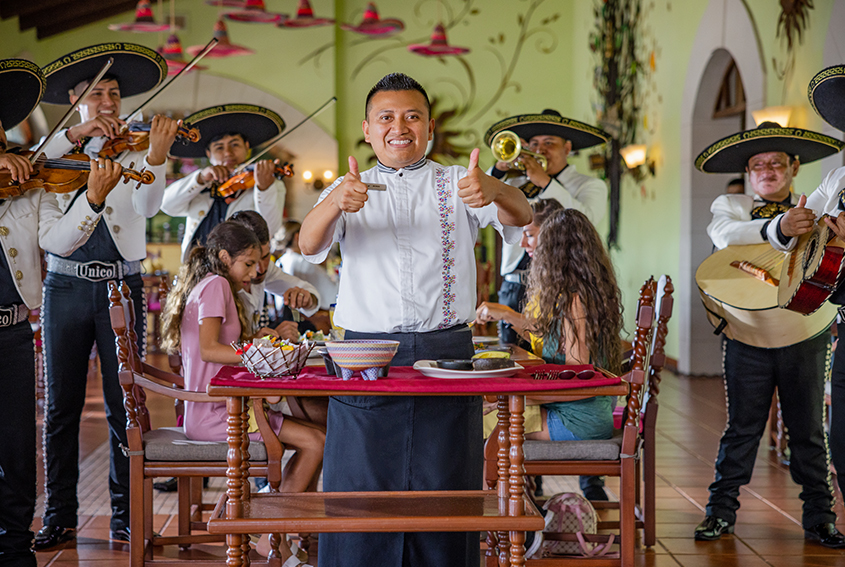
Are you staying with us this September? All the restaurants at Royal Resorts will celebrate with a touch of Mexico, a traditional dish as a chef’s special; tacos so delicious you won’t be able to resist ordering more than one; classic fresh-baked breakfast pastries; poolside lunch orders, a signature cocktail and perhaps even fiestas and music for Mexican Independence. They are all part of Culinary Experiences by Royal Resorts. Ask your waiter for information and be sure to try something new.
Book your table at Hacienda Sisal this month for an evening of Mexican cuisine and music in a splendid setting. Order chiles en nogada, the classic Independence dish in the patriotic colors of red, green and white. Poblano chilies with a savory-sweet filling of minced pork and beef, onion, garlic, tomato, peach, apple, pear, plantain, cinnamon, nutmeg, pine nuts, almonds, walnuts and raisins, topped with a creamy walnut sauce and sprinkled with pomegranate seeds and chopped parsley. This is a Mexican masterpiece, made to the traditional recipe from Puebla, and you’ll find many other classic recipes on the menu, including cochinita pibil, lamb mixiotes, carnitas and chef’s creations such as lobster Sisal.
There’s live Mexican music during the week, with a group on Tuesday and Thursday and mariachis on Wednesday. The Tequila and Mezcal Experience pairs a selection of these two spirits with different dishes on Monday and Friday. Reservations required. The popular Sunday Brunch also has a Mexican flavor.
Plan your Mexican evening at Hacienda Sisal, book your table now
More festive Mexican dishes to try in September
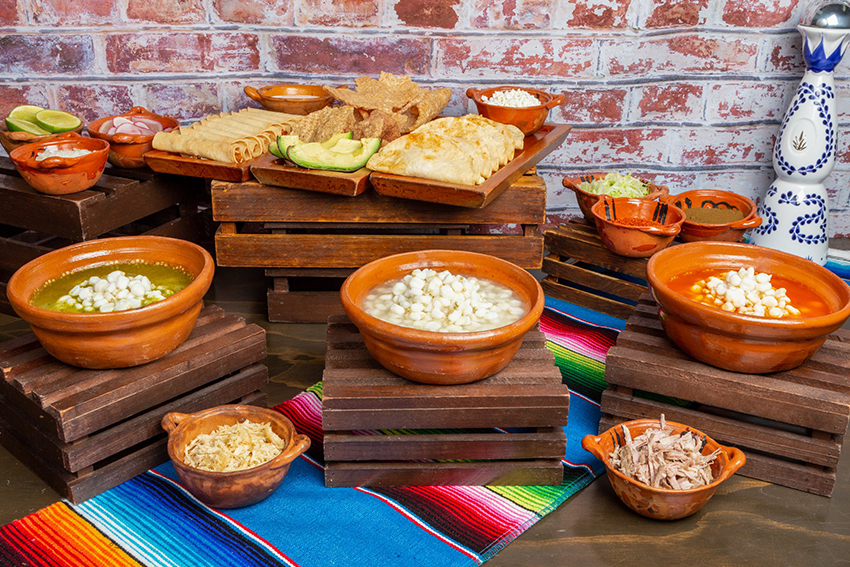
Pozole
A bowl of pozole, Mexico’s hearty pork or chicken and hominy soup is topped with crispy tortilla strips, radish, lettuce, chopped onion, coriander, oregano and chili.
In the Nahuatl language pozole means foam or froth and this soup recipe dates from the pre-Hispanic period when it was prepared to honor the Mexica god Xipe Totec. Nowadays, pork or chicken are used and the broth can be red (from Jalisco) or green or white (Guerrero).
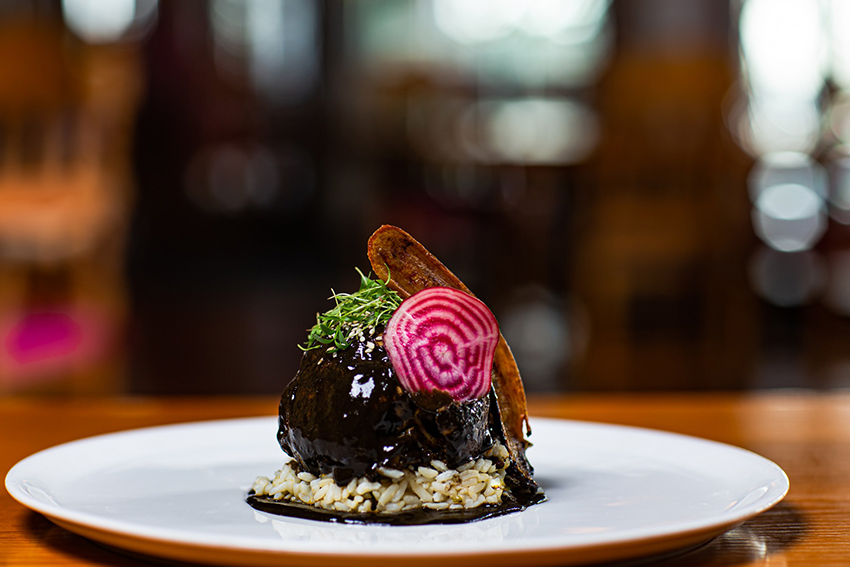
Mole
Have you ever tried mole, one of Mexico’s classic dishes? Served over chicken or turkey, the complex flavors of this sauce blend chocolate and a touch of chili with garlic, ground tortillas, dried fruit, nuts, seeds, herbs and spices. Sprinkled with sesame seeds, this mouthwatering recipe is served with rice and onion slices.
Mole is made according to family recipes passed down from generation to generation. The word mole is derived from the Aztec word molli or mulli for sauce and the recipe is a true blend of New and Old World ingredients, pre-Hispanic staples and spices introduced by the Spaniards. Spanish diarists of the day such as Antonio de la Ciudad Real and Fray San Pedro Sebastian talk about visits to convents and the dishes featuring native fruits and nuts, European spices, chicken or turkey served by the nuns.
Mole is said to have originated in the Santa Rosa Convent in Puebla. In the 17th century, Sister Andrea de la Asunción ground and blended chocolate, chili, sesame seeds, cinnamon, almonds, peanuts, garlic and pepper among other ingredients, to create a sauce that she served with turkey to honor the visit of the Viceroy. There are now countless variations on the original recipe from Puebla and the neighboring state of Oaxaca has seven different types of mole, all are delicious.
Mole has so many ingredients and processes that it takes hours or days to prepare. According to the Dictionary-Encyclopedia of Mexican Cuisine there are over 40 varieties of mole in Puebla, Oaxaca and other states, some are spicy and others are mild.
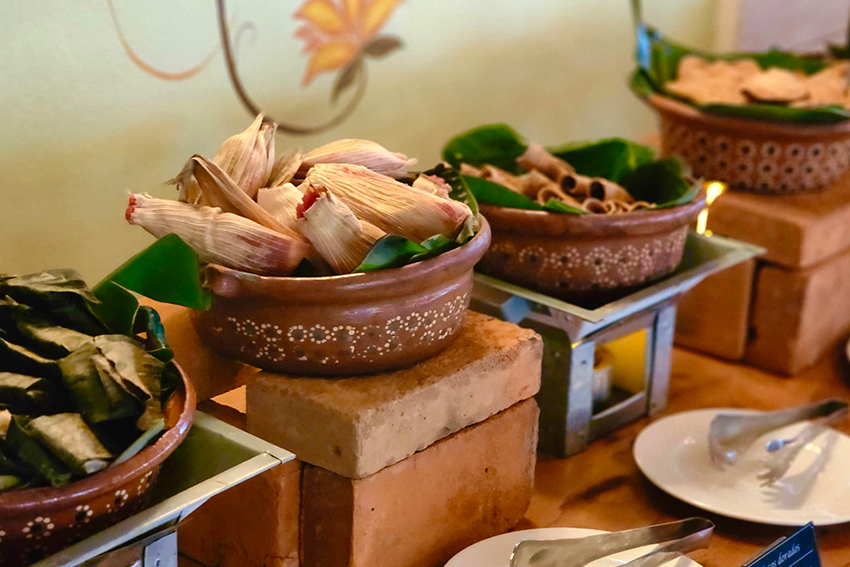
Tamales
The word tamal comes from the Nahuatl word tamalli, which means “wrapped.”
Made from corn dough, they have savory fillings such as pork, shredded beef, chicken, mole salsa, cheese and rajas poblanas or are sweet (sweet corn, raisins or other dried fruit) and are wrapped in corn or palm leaves and steamed.
Although a number of Latin American countries make tamales, Mexico has the largest number of recipes. Each state has its own traditional tamales such as coriundas from Michoacán or chipilines from Chiapas and they are served during fiestas, often with atole or hot chocolate.
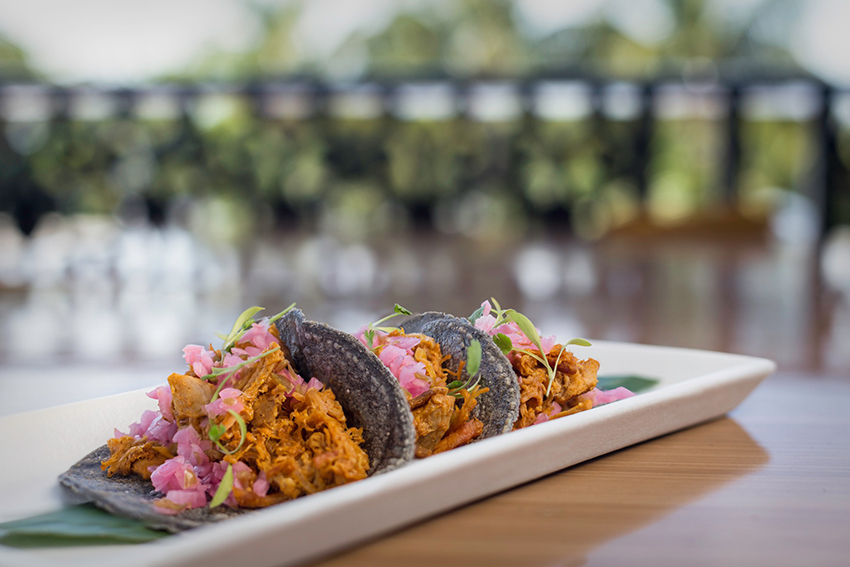
Cochinita pibil
In the Yucatan, cochinita pibil is served on special occasions. Pieces of pork, a pork leg or even a suckling pig (lechón) are marinated in an achiote (annatto) and Seville orange juice spice mix or recado. The meat is then wrapped in banana leaves and traditionally cooked in a pit or pib for hours. Nowadays an oven is used to slow roast the meat until it literally falls off the bone and melts in your mouth.
Cochinita pibil is served with freshly made tortillas, pickled red onion and xnipek habanero sauce.
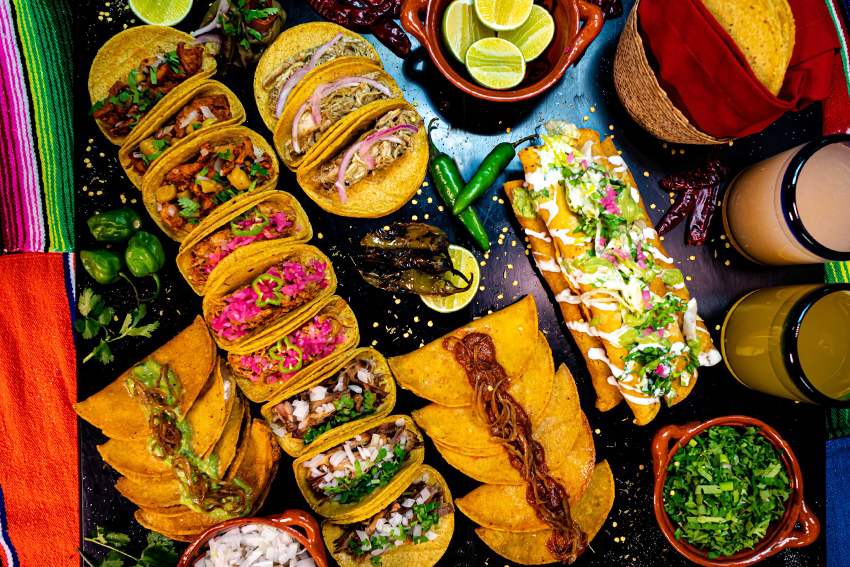
Taco time!
A plate of tacos and a toast of tequila is a great way to celebrate Mexican Independence. Fillings for the tortillas that you roll up to form your taco range from grilled beef, chicken or marinated pastor-style pork to shrimp and fish, stewed chicken, cochinita pibil, rajas or poblano chili strips, among others. Alternatively, order tacos dorados which are crispy fried tacos filled with shredded chicken or beef, seafood or chorizo and potato and topped with lettuce, onion or pico de gallo, cheese and cream. Be sure to order guacamole and try different chili salsas with your tacos.

